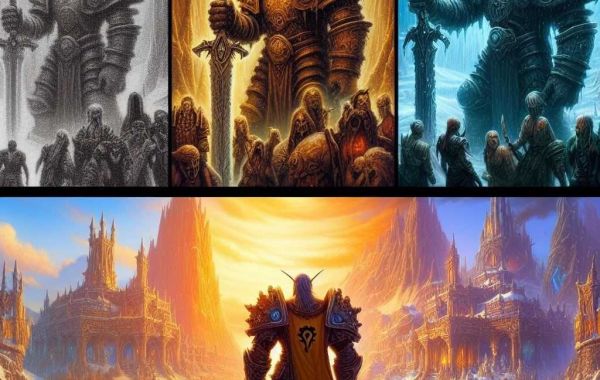Since its launch in 2004, World of Warcraft (WoW) has captivated millions of players worldwide, evolving significantly from its original "Vanilla" version to the modern "Retail" experience. For many gamers, the journey through Azeroth has been more than just a game; it has been a vibrant, evolving world. From the early days when players would scramble to buy WoW gold to gear up for their adventures, to the current era of streamlined gameplay and complex storylines, WoW has continually adapted to meet the demands of its diverse player base.
The Vanilla Era: A New Dawn for MMORPGs
World of Warcraft's initial release, often referred to as "Vanilla WoW," set a new standard for MMORPGs. The game’s vast open world, rich lore, and social dynamics offered an unprecedented level of immersion. Players could choose from a variety of races and classes, each with unique abilities and storylines. The sense of exploration and discovery was palpable as players ventured into unknown territories, formed alliances, and tackled challenging dungeons.
One of the most significant aspects of Vanilla WoW was its community-driven nature. Guilds were essential for tackling end-game content, and player interactions were crucial for progress. The game’s economy was also a focal point, with players often needing to buy WoW gold to afford the best gear and resources. The gold farming and trading markets thrived, creating a dynamic and sometimes controversial aspect of the game.
The Burning Crusade and Wrath of the Lich King: Expanding Horizons
The first expansion, The Burning Crusade (2007), introduced new continents, races, and a raised level cap. This expansion brought significant gameplay enhancements and more complex raid mechanics. The introduction of the Outland region and the Blood Elf and Draenei races added depth and variety to the game.
Wrath of the Lich King (2008) continued this trend, offering players the chance to explore the frozen continent of Northrend and confront the infamous Arthas Menethil, also known as the Lich King. This expansion is often hailed as one of the best, with its compelling storyline, challenging raids, and the introduction of the Death Knight class. The game's population surged, solidifying WoW's position as the premier MMORPG.
Cataclysm and Mists of Pandaria: Shaking Things Up
Cataclysm (2010) brought dramatic changes to Azeroth, literally reshaping the world. The game's core zones were revamped, and two new races, Goblins and Worgen, were introduced. This expansion emphasized the game's evolving nature, showing that Blizzard was willing to take bold steps to keep the game fresh.
Mists of Pandaria (2012) introduced the Pandaren race and the Monk class, adding an entirely new continent to explore. This expansion was notable for its shift in tone, focusing more on exploration and cultural themes rather than apocalyptic threats. It also introduced new gameplay systems like the Pet Battle system, which added a new layer of depth to the game.
Warlords of Draenor and Legion: Back to the Roots
Warlords of Draenor (2014) revisited key historical figures and locations, offering a blend of nostalgia and new content. The expansion's story and the introduction of player housing through Garrisons were well-received, though it faced criticism for a perceived lack of content in later stages.
Legion (2016) revitalized the game with its engaging storyline, the introduction of the Demon Hunter class, and Artifact weapons. The expansion was praised for its content-rich patches and innovative gameplay mechanics. The WoW gold price became a topic of interest again as players sought to acquire the best gear and mounts.
Battle for Azeroth and Shadowlands: Modernizing WoW
Battle for Azeroth (2018) focused on the longstanding conflict between the Alliance and Horde, introducing new continents, allied races, and warfronts. While the expansion had a mixed reception due to its story pacing and system mechanics, it continued to expand the game's world and lore.
Shadowlands (2020) took players into the afterlife, exploring new realms and introducing the Covenant system. This expansion brought significant changes to leveling, making it faster and more streamlined. The game's graphics and overall aesthetic received substantial upgrades, making the world of Azeroth more visually stunning than ever.
The Future of World of Warcraft
As World of Warcraft continues to evolve, it remains a beloved staple in the gaming community. Blizzard's commitment to updating and expanding the game ensures that both new and veteran players always have something to look forward to. Whether it's through new expansions, quality-of-life improvements, or community-driven events, WoW continues to adapt and thrive.
For players, the journey through Azeroth is more than just a game; it's a living, breathing world that evolves alongside them. From the days of Vanilla WoW to the modern Retail experience, World of Warcraft remains a testament to the enduring appeal of MMORPGs. As long as there are heroes willing to venture into Azeroth, the world of WoW will continue to grow and inspire.








